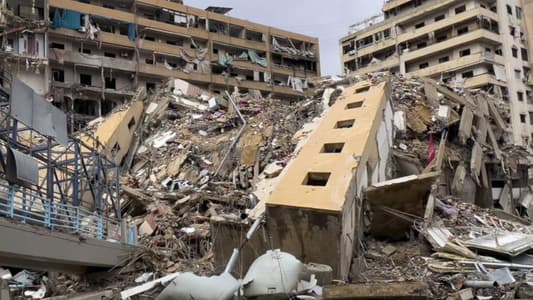وقف إطلاق النار بين إسرائيل وحزب الله: اتفاق هش أمام تحديات كبيرة
دخل وقف إطلاق النار بين إسرائيل وحزب الله حيز التنفيذ في 27 نوفمبر 2024، وسط شكوك بشأن قابليته للتنفيذ. المحلل البريطاني كايل أورتون وصف هذا الاتفاق بأنه يواجه مشكلات هيكلية، معتمدًا على قرار الأمم المتحدة رقم 1701 الذي أنهى حرب 2006.
مضمون القرار 1701 وتحدياته
يرتكز الاتفاق الجديد على إعادة تفعيل قرار 1701، الذي نص على إنشاء منطقة عازلة خالية من أي وجود مسلح غير رسمي بين “الخط الأزرق” ونهر الليطاني، مع تعزيز وجود القوات المسلحة اللبنانية وقوات “اليونيفيل”. كما يدعو القرار إلى التنفيذ الكامل لاتفاق الطائف ونزع سلاح الجماعات المسلحة في لبنان، مع تركيز خاص على حزب الله.
لكن التحدي الأساسي، وفقًا لأورتون، يكمن في أن الجيش اللبناني يعاني من انقسامات طائفية ولا يمتلك القدرة الكافية لملء الفراغ الذي قد يتركه انسحاب حزب الله. أما قوات “اليونيفيل”، فقد أظهرت خلال السنوات الماضية عجزًا عن مراقبة أو منع توسع حزب الله على طول الحدود.
تفاصيل الاتفاق الحالي
الاتفاق الحالي يتضمن جدولًا زمنيًا من 60 يومًا لانسحاب القوات الإسرائيلية من جنوب لبنان. في هذه الفترة، ستتولى قوات اليونيفيل والجيش اللبناني مهمة السيطرة على المناطق المُخلاة، مع التزام حزب الله بالانسحاب شمال نهر الليطاني ونزع سلاح الجماعات المسلحة تدريجيًا.
العنصر المستحدث هو تشكيل لجنة دولية تضم الولايات المتحدة وفرنسا لمراقبة تنفيذ الاتفاق. لكن إسرائيل أبدت تحفظاتها تجاه الدور الفرنسي بسبب العلاقات الوثيقة بين فرنسا ولبنان.
إشكاليات التنفيذ
يرى الكاتب أن التحدي الأكبر يكمن في غياب قوة دولية أو محلية قادرة على ضمان التزام حزب الله بالاتفاق، مما يجعل الوضع الحالي أشبه بإعادة تدوير للظروف التي فشل فيها القرار 1701.
إسرائيل وحزب الله: مكاسب وخسائر
رغم الادعاءات الإسرائيلية بأنها نجحت في تحييد حزب الله، إلا أن الجماعة استمرت في إطلاق الصواريخ خلال الأيام الماضية. الهدف الأساسي لإسرائيل من الحرب كان تأمين عودة 70 ألف نازح إسرائيلي إلى المناطق الشمالية، وهو هدف يبدو بعيد المنال حتى الآن.
رئيس الوزراء الإسرائيلي بنيامين نتنياهو أشار إلى أن وقف إطلاق النار يمنح الجيش الإسرائيلي استراحة ضرورية، مما يعكس الجانب العملي للاتفاق. سياسيًا، يعزز هذا الاتفاق موقع نتنياهو، خاصة مع دعمه العلني من الرئيس الأميركي جو بايدن.
The Ceasefire Between Israel and Hezbollah: A Fragile Agreement Facing Major Challenges
The ceasefire between Israel and Hezbollah, implemented on November 27, 2024, faces significant obstacles regarding its sustainability. British analyst Kyle Orton described the agreement as structurally flawed, relying heavily on UN Resolution 1701, which ended the 2006 war.
UN Resolution 1701 and Its Challenges
The new agreement aims to revive the framework of Resolution 1701, which established a buffer zone free of armed groups between the “Blue Line” and the Litani River. This resolution also called for the Lebanese Armed Forces (LAF) and UNIFIL to maintain control in the area and implement the full terms of the Taif Agreement, including the disarmament of armed groups like Hezbollah.
Orton argues that the core challenge lies in the LAF’s limited capabilities. The Lebanese army lacks the capacity to fill the vacuum left by Hezbollah’s withdrawal, as it is composed of factions, some of which have ties to Hezbollah or Iran’s Revolutionary Guard. Additionally, UNIFIL has demonstrated, over the past 18 years, an inability to curb Hezbollah’s military buildup along the border.
Details of the Current Agreement
The agreement includes a 60-day timetable for Israel’s full withdrawal from southern Lebanon. During this period, UNIFIL and the Lebanese army are expected to secure vacated areas, while Hezbollah is tasked with retreating north of the Litani River and gradually disarming other non-state groups.
A key addition is the formation of an international monitoring committee involving the United States and France. However, Israel has reservations about France's involvement due to its close ties with Lebanon.
Implementation Concerns
According to Orton, the most significant issue is the lack of an on-ground force capable of ensuring Hezbollah’s compliance. This raises concerns that the situation may replicate the ineffective conditions established by Resolution 1701.
Israel and Hezbollah: Gains and Losses
Although Israeli commentators claim that Israel has neutralized Hezbollah, the group continued launching rockets in recent days. Israel's primary goal in this conflict was to weaken Hezbollah enough to ensure the return of 70,000 Israeli evacuees to the northern region. However, the success of this objective remains uncertain.
Israeli Prime Minister Benjamin Netanyahu highlighted the ceasefire as a strategic move to provide the Israeli army with a much-needed operational pause. Politically, the agreement strengthens Netanyahu’s position, showcasing his ability to align with both U.S. President Joe Biden and President-elect Donald Trump.
Translated by international scopes team
المصدر: 24
 International Scopes – سكوبات عالمية إجعل موقعنا خيارك ومصدرك الأنسب للأخبار المحلية والعربية والعالمية على أنواعها بالإضافة الى نشر مجموعة لا بأس بها من الوظائف الشاغرة في لبنان والشرق الأوسط والعالم
International Scopes – سكوبات عالمية إجعل موقعنا خيارك ومصدرك الأنسب للأخبار المحلية والعربية والعالمية على أنواعها بالإضافة الى نشر مجموعة لا بأس بها من الوظائف الشاغرة في لبنان والشرق الأوسط والعالم


